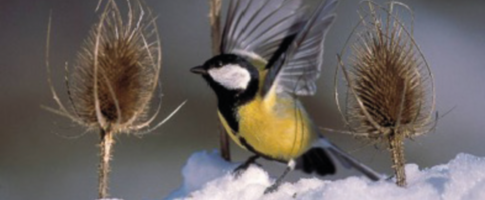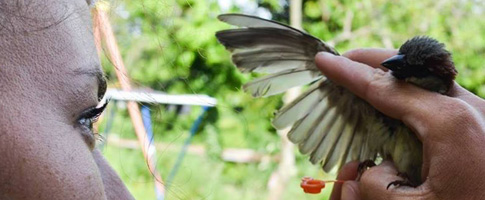Birds and neonicotinoids

The Laboratory of Evolutionary Ecophysiology studies the physiological processes, which underlie the evolution of the life history and reproductive strategies that maximize the Darwinian fitness of individuals. Using mainly birds and bats as study organisms, the research group investigates topics such as the role that oxidative stress plays in the evolution of life history traits and in the evolution of secondary sexual characters (e.g. colourful ornaments).
Impact of neonicotinoids on two species of sparrows - Links with agricultural practices, bird health and male fertility
Together with the Swiss Ornithological Institute in Sempach, the laboratory of evolutionary ecophysiology has started in 2015 a project to evaluate the impact of some agricultural contaminants on bird health. This project will last two years, is co-funded by a CRUS Sciex grant, by the Federal Office for the Environment as well as by UniNE's SNF overhead money and involves two master students, Ségolène Humann-Guilleminot and Mélanie Annen, and a post-doc from Poland, Łukasz Binkowski.
Modern agriculture is usually characterized by the wide use of pesticides. These substances affect the trophic chain, and can even cause local extinction of populations due to lack of food (lower biomass of insects), indirect toxicity and/or induction of oxidative stress, which ultimately may negatively affect the reproduction and survival of wild animals. Neonicotinoids are widely used insecticides which bind to nicotinic acetylcholine receptors (nAChRs) in the central nervous system of insects, causing receptor blockage, paralysis and death. They bind more strongly to insect receptors than to those of vertebrates, but birds seem to be more susceptible than other vertebrates.
The study aims at investigating sublethal effects of neonicotinoids on two wild passerine birds, the house sparrow Passer domesticus and the tree sparrow Passer montanus. A network of farms throughout Switzerland will be used to investigate potential links between agricultural practices, levels of neonicotinoids found in soil, crops and natural vegetation samples on the one hand, and levels of neonicotinoids found in bird plasma, bird health (oxidative stress and levels of stress hormones) and male bird reproductive capacity (sperm quantity and quality) on the other hand. Neonicotinoid residues and markers of oxidative stress will be quantified by the Neuchâtel Platform of Analytical Chemistry (NPAC).
 Blood sample taken from a house sparrow.
Blood sample taken from a house sparrow.


